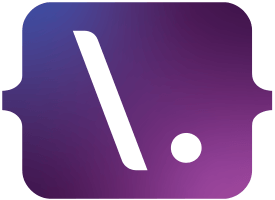
Issue 728
26th September 2025
Written by Dave Verwer
Comment
If you haven’t checked in on Swift on the server for a while, now is a great time to give it another look. As Tim Condon says in this 10-year milestone post, Swift on the server has come a very long way in that time.
In addition to all the technical improvements, it’s also great to see success stories like Things Cloud, Apple’s internal password monitoring service, and even Swift Package Index. We should celebrate those successes, but it’s safe to say that adoption of Swift on the server continues to be challenging, and I wish there were tens or even hundreds of these stories being shared.
Part of the challenge is left over from the early days of Swift on the server. If you tried Vapor before async/await, the learning curve was steep. In fact, as a below-average developer myself, I found the learning curve to be almost impossible. 😬 Things are very different these days, with both Vapor and Hummingbird fully embracing async/await. I’m so happy to say that there’s not a single EventLoopFuture in sight if you just want to build an app! ❤️
So where do we go from here to increase adoption? I used to think that Apple would one day do a “CloudKit functions” type product that would bridge developers from using CloudKit into writing server-side logic with Swift, and from there encourage people towards standalone frameworks like Vapor. However, over the past several years I’ve changed my mind on that. Instead, I’m more convinced than ever that what we have right now is Apple’s plan, and I’m happy about it.
What we have with the current Swift on the server packages is genuine open source development in a way that any “CloudKit functions” product almost certainly wouldn’t be. Apple engineers work in public on packages and accept plenty of community contributions. This is open source working as intended, including a fantastic effort from the Swift Server Workgroup to incubate and recommend packages. If you’d like to see that community in action, the Server-Side.swift conference is happening next week in London.
Yes, there could be stronger links from developer.apple.com to Swift on the server developer resources, but the inclusion of sessions like Use Xcode for server-side development at WWDC ‘22 and Explore the Swift on Server ecosystem at WWDC ‘25 is a step in the right direction. However, there’s no mention of it at all on, for example, this page.
Where the bigger challenge lies, however, is in adoption outside the existing Swift community, where a language’s association with a large corporation like Apple might not always be seen as positive. This work needs doing on Swift.org, and over the past couple of years there has been significant progress with content promoting server development, tutorials, and of course the site redesign, which makes a huge difference in how people outside the Swift community view the language.
There’s plenty of work still to do to promote the language as being a great choice for a back-end or web app, but the frameworks are ready for that promotion, so please do give them another look if you’ve not checked them out recently.
– Dave Verwer
Sponsored Link
Faster iOS app releases with automated QAIf slow QA processes are a bottleneck for your iOS releases, try QA Wolf. Their AI-native service delivers 80% automated test coverage in weeks, with tests running on real iPhones and iPads—all in 100% parallel with zero flakes. Rated 4.8/5 ⭐ on G2 — Schedule a demo to learn more.
Tools
LynfoI still believe Apple should release an opinionated set of swift-format rules, use it to format all its own open-source code, and advocate for it as the standard for open-source Swift. Until that happens, and I’m not holding my breath, take a look at this new tool from Rui Aureliano that makes editing the configuration file a breeze.
GitHub Markdown Shortcuts
What a useful set of Shortcuts from Michael Liberatore! Impress your co-workers with correctly sized iOS screenshots, call-outs, expandable detail sections, and tables.
Code
Fast Thumbnails with CGImageSourceIt’s always great to see someone as experienced with app development as Max Seelemann, co-creator of Ulysses, start blogging for the first time. In his first post, he tackles the important topic of speeding up image loading on both iOS and macOS. Long live Core Graphics!
Using Observations to observe model properties
There’s a fairly large change in how values are observed in the Xcode 26 SDKs. Donny Wals gives a nice overview of how to switch your withObservationTracking calls to the new Observations API. I like the approach of using AsyncSequence for automatic, sequential updates. That said, Donny points out a couple of areas that require caution, so read the article!
Hidden Gems in the Swift Argument Parser
I absolutely love the swift-argument-parser package. It was what finally made me switch from Ruby to Swift for those little tools that we all write for ourselves. Natan Rolnik has put together a great two-part set of posts covering some of the things you might not have seen anyone else cover before, such as Zsh autocompletions, man pages, and more.
Design
Developers should not have access to eye tracking informationCristian Díaz links to a fascinating study on the privacy implications of sharing eye-tracking data. Just one look at the diagram in Cristian’s post should explain exactly why Apple doesn’t let apps get direct access to eye-tracking data. Your eyes sure do say a lot about you!
Business and Marketing
ButterKitEvery time I link to an App Store screenshot preparation tool, I find myself wishing, “well, it’d be perfect if it just did …”. I had no such thoughts when I checked out this new tool from Zach Spitulski. It can add text on a custom background, visualise full 3D rotation of device frames, supports localisation with built-in AI-powered translation, and automatically capture from the Simulator. It’s really good.
Jobs
Product Engineer @ Tolan – At Tolan, we’ve built the world’s first voice-native embodied AI companion in a Swift 6 app, working alongside an Apple Design Award winning creative team to bring the Tolan characters to life. We work hard, with a high degree of autonomy and ownership. We work together in-person in downtown SF. – On-site (United States in CA) with some remote work (within US timezones)
And finally...
Swift for swifts? 🐦
